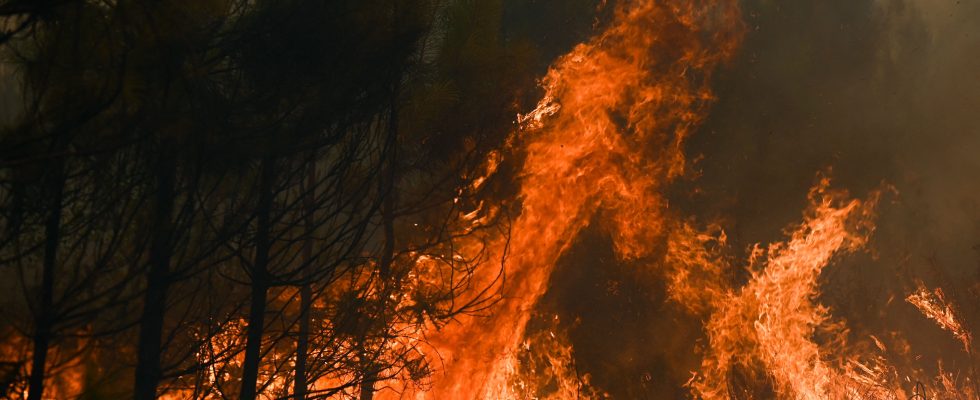Between a region affected by flooding and another affected by historic drought, there are only a thousand kilometers. Paradoxical and striking effect of an ever more disrupted climate, and growing tensions on the country’s water resources. Each summer now imposes its debate on its uses and access, while the sometimes torrential rains of winter ravage certain territories. How can France adapt to this new reality? L’Express wanted to contribute to a debate that is more necessary than ever. These six “black scenarios” for water by 2030 are the translation. They are neither forecasts nor predictions. But hypotheses on which public and industrial authorities are already working more or less directly, and whose frameworks have been refined and enriched by the forty experts interviewed: researchers, meteorologists, senior civil servants, engineers, insurers… All are unanimous: the The country’s resilience in the face of these events is being built now.
Most fires do not exceed the “media threshold” thanks to the firefighters’ proven tactic: attacking emerging fires massively. But they were unable to do anything, at the beginning of August 2027, against the blaze that appeared near Lodève, north of Hérault. All the conditions were met for an extreme fire, boosted by the “heat pump” effect. “A depression blocked over the Atlantic cannot continue its course towards the east. It turns and brings warm air from North Africa to the south of France,” describes Alix Roumagnac, president of Predict Services , a company specializing in climate risk. Prolonged drought, water tables at a worrying level, heatwave and strong winds: the flammability of vegetation is at its highest in this dry territory, already subject to numerous restrictions.
The firefighters of SDIS 34, exhausted by a fire season which is lengthening with climate change, rush towards the fire. The pine forest and scrubland fuel the fire, which quickly gets out of control. The first trucks used drinking water from fire hydrants – a source they tried to preserve. A “power group” is engaged, i.e. heavy vehicles containing 15,000 to 20,000 liters of water. They carry out norias to nearby ponds or rivers, among the 350 “raw water areas” identified in the department. Problem is, “a certain number of reservoirs are decreasing with the drought”, notes Eric Florès, director of the Hérault fire brigade and vice-president of the National Federation. Even though they have been working for several years to diversify their water resources, which are becoming scarce, firefighters have to move further and further away to recharge.
Necessary arbitrations
State apparatus were immediately called to the scene. The “The Wave” device is triggered: eight Canadair and Dash planes converge on the disaster. But the exceptional drought does not allow them to bail out on the nearby Salagou Lake. They must fly to the Thau pond to fill their tank. The rotations are around twenty minutes longer, therefore fewer.
The fire spread, fanned by winds oriented northwest/southeast. Evacuations are increasing: Soumont, Le Bosc, Gignac… Campsites and lodges are hastily emptied: in summer, the area is filled with tourists who must be taken care of. Several thousand people are affected. A few days after its departure, the fire jumped the Hérault – the river – and approached the east of Montpellier. The sky is ash color. Firefighters deploy small dams on surrounding waterways to create artificial reservoirs. Insufficient. They draw on the 5,000 cubic meters of water stored in the winegrowers’ cooperative cellars, in the reserves of emergency centers or in certain town halls. They even had the network of irrigation canals in the lower Rhône opened. And mobilize the three planes that they rent on behalf of the department, 3,000 liters of water in their bellies.
Firefighters from other regions arrive as reinforcements, European cooperation is activated. Except that the worst is not yet over: concomitant fires break out in the Var and, a less usual phenomenon but which tends to become so, in the Vosges. It’s “a case of overwhelm”, notes Valentin Wendling, engineer at IMT Mines Alès. The operational center for interministerial crisis management, in Paris, takes control and distributes resources. Devices are diverted to these other lights. In a 2022 reportsenators already feared “the multiplication of situations in which arbitration will be necessary, with the inevitable consequence of an increase in damages”.
The wind finally calms down in Hérault, after eleven nightmarish days. The fire was brought under control, then extinguished three weeks later. Nearly 14,000 hectares burned. Worse than in Landiras (Gironde) five years earlier. Four dead and dozens injured. The heaviest death toll for a single fire in forty years.
.
